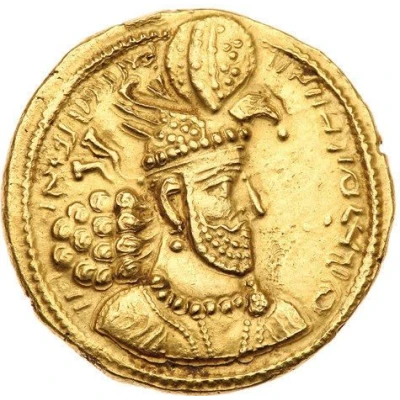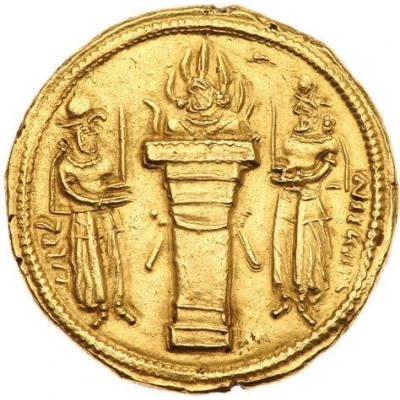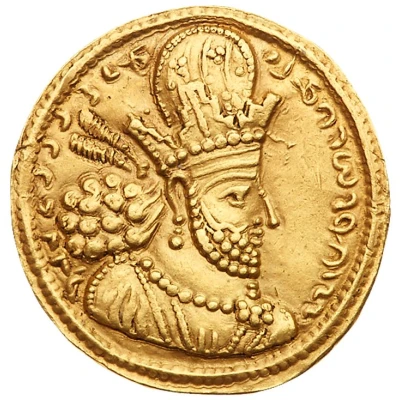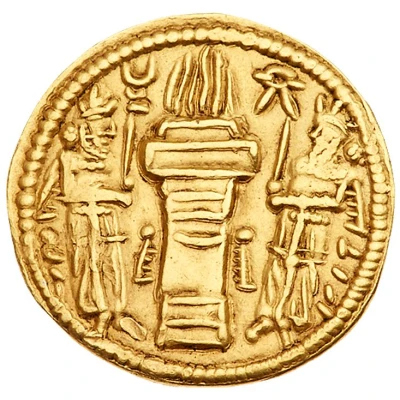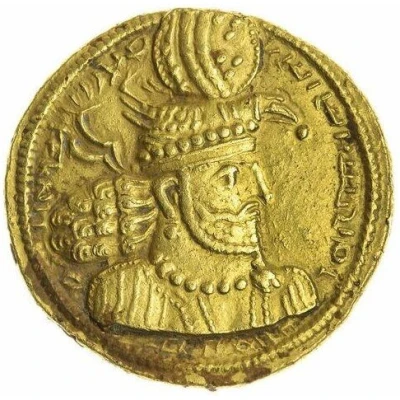
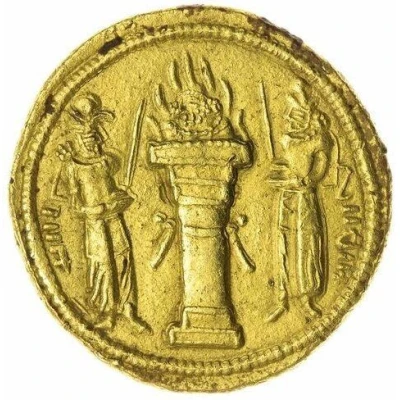

Dinar - Hormazd II
| Gold | 7.23 g | - |
| Issuer | Sasanian Empire (Sasanian Empire (224-651)) |
|---|---|
| Emperor | Hormazd II (302-309) |
| Type | Circulating commemorative coin |
| Years | 303-309 |
| Value | Dinar (1) |
| Currency | Dinar (224 AD-651 AD) |
| Composition | Gold |
| Weight | 7.23 g |
| Shape | Round (irregular) |
| Technique | Hammered |
| Demonetized | Yes |
| Updated | 2024-10-10 |
| Numista | N#417897 |
|---|---|
| Rarity index | 100% |
Reverse
Fire altar decorated with ribbons, bust of Ahura Mazda left in flames, flanked by two attendants, each bearing a sword, the figure on left wearing an eagle crown with korymbos, that on the right wearing a mural crown with korymbos.
Script: Inscriptional Pahlavi
Comment
Ahura Mazda also known as Oromasdes, Ohrmazd, Ormazd, Ormusd, Hoormazd, Harzoo, Hormazd, Hormaz and Hurmuz is the creator deity and god of the sky in the ancient Iranian religion Zoroastrianism. He is the first and most frequently invoked spirit in the Yasna The literal meaning of the word Ahura is "lord", and that of mazda is "wisdom".
The Korymbos (Greek: Kόρυμβος, Latin: Corymbus; both meaning "cluster" or "uppermost points") was a jewel-studded globe containing the top hair of the ruler of the Sasanian dynasty of Iran, resting on his crown.
Interesting fact
One interesting fact about the Dinar - Hormazd II (303-309) coin is that it features an image of the king, Hormazd II, on one side and a fire altar on the other. The fire altar was an important symbol in Zoroastrianism, the dominant religion of the Sasanian Empire at the time. This coin is a rare example of a Sasanian coin that features both the king and a religious symbol, highlighting the importance of religion and kingship in Sasanian culture.
